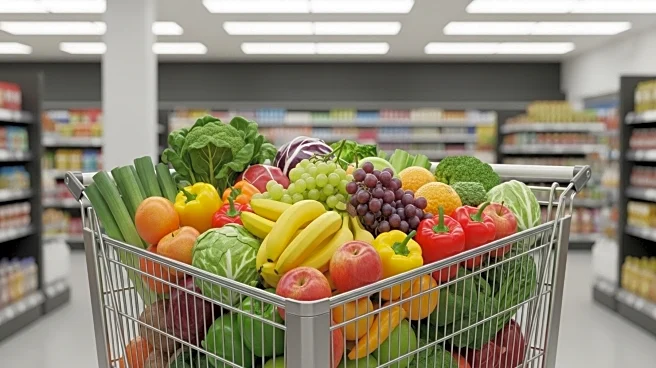What's Happening?
Amazon has rebranded its private label grocery offerings under the new Amazon Grocery banner, consolidating products from Amazon Fresh and Happy Belly. This move includes over 1,000 food items, such as fresh produce, meat, and seafood, with most priced under $5. The rebranding is part of Amazon's strategy to strengthen its position in the grocery sector, which has been ongoing since its acquisition of Whole Foods Market in 2017. The company has also expanded its same-day fresh food delivery service nationwide, further enhancing its grocery market presence.
Why It's Important?
The rebranding of Amazon's private label groceries signifies a shift in consumer perception towards private labels, which are increasingly seen as high-quality and cost-effective alternatives to branded products. This change is particularly relevant in the current economic climate, where inflation and tariffs have driven up food prices. By offering budget-friendly options, Amazon is likely to attract more customers, potentially increasing its market share in the U.S. grocery sector. This move could also pressure traditional grocery retailers to adapt their strategies to compete with Amazon's growing influence.
What's Next?
Amazon plans to expand its Amazon Grocery product lineup with new items, including fresh bakery goods and frozen meals, in the coming months. The company is also focusing on sustainability by reducing plastic usage in its packaging. As Amazon continues to innovate and expand its grocery offerings, traditional grocery retailers may need to enhance their private label strategies and improve customer experience to maintain competitiveness.
Beyond the Headlines
Amazon's rebranding effort highlights a broader trend of retailers emphasizing their private label brands to meet changing consumer preferences. This shift could lead to a more competitive grocery market, where private labels play a significant role in shaping consumer choices. Additionally, Amazon's focus on sustainability in packaging aligns with growing consumer demand for environmentally friendly products, potentially setting a new standard for the industry.










